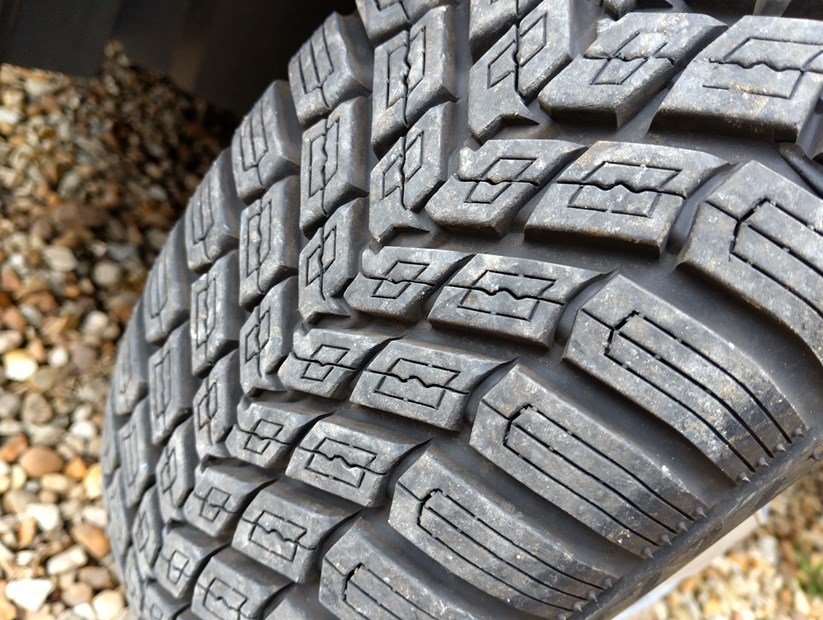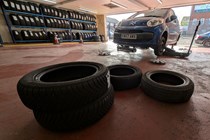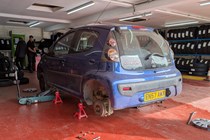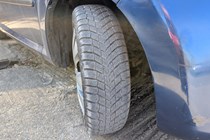We’ve fitted a full set of Davanti Alltoura 4-Seasons tyres to our long-term 2007 Citroen C1 and we’re running them for a year to see how all-season tyres cope with real-world British driving across throughout the year. Are they good in the winter and poor in the summer? Or vice versa?
This isn’t just a tyre test. It’s also a stress test for the sort of decision a lot of drivers face: do you stick with rock-bottom budget tyres on an older runabout – the sort of unbranded stuff your tyre fitter will offer you from the bottom end of the price list – or is it worth stepping up to a properly engineered mid-range all-season option for a little bit more money?
The Davanti Alltoura is a typical mid-range all-season tyre – priced competitively for the segment and promises good grip year-round, confident braking and solid durability. But do they deliver? This report covers spring and summer performance.
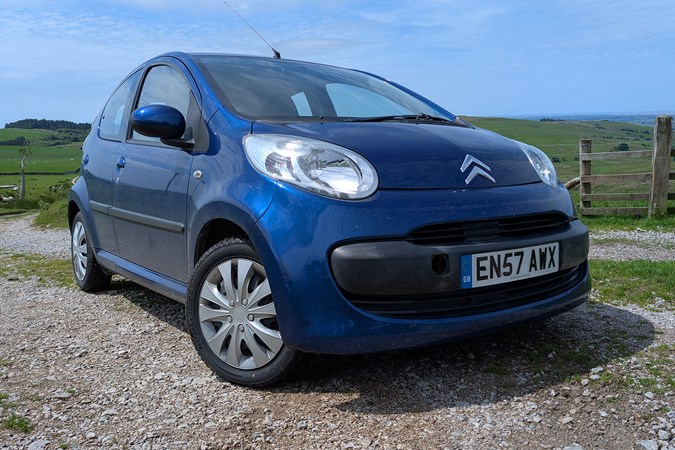
Why we’re testing the Davanti Alltoura
This long-term tyre test is designed to simulate a typical ownership experience. We’re running the mid-priced Davanti Alltouras on a city car that’s representative of many cheap sub-£2,000 used buys, and a typical first car for many people – in this case, a 2007 Citroen C1 used for commuting, errands and the odd long trip.
Our aim is to evaluate performance across all four seasons, reporting back on grip, comfort, economy and tread life. Over the next year, we’ll log real-world data, take subjective notes and measure tread depth every few thousand miles.
Spring was our first test, bringing with it highly variable weather, from intense sunshine to sudden downpours. It’s followed by a summer update, with even more blistering heat and heavy rainfall. It gave us a great chance to put the tyres through their paces.
What’s the deal with these Davanti Alltoura tyres?
The Davanti Alltoura 4-Seasons are typical budget offerings you might simply buy on price. That’s no bad thing, as they are a step above some frightful imports you might be offered right at the bottom of the market – and worth forking out a few more quid for without going down the line of buying from a premium brand.
The Alltoura features a directional tread design, which improves water clearance and helps resist aquaplaning. It’s worth noting, too, that the Alltoura meets the Three Peak Mountain Snowflake standard, meaning it qualifies as a true winter tyre in many parts of Europe. This is partly thanks to the intelligent siping design, with fine slits in the tread blocks that help clear water from beneath the contact patch and improve grip on snow and ice.
In independent Dekra testing in Germany, the Alltoura was evaluated over 12,500 miles on a Volkswagen Golf and demonstrated excellent durability and even wear. That’s a strong endorsement, and one that reflects our early impressions so far.
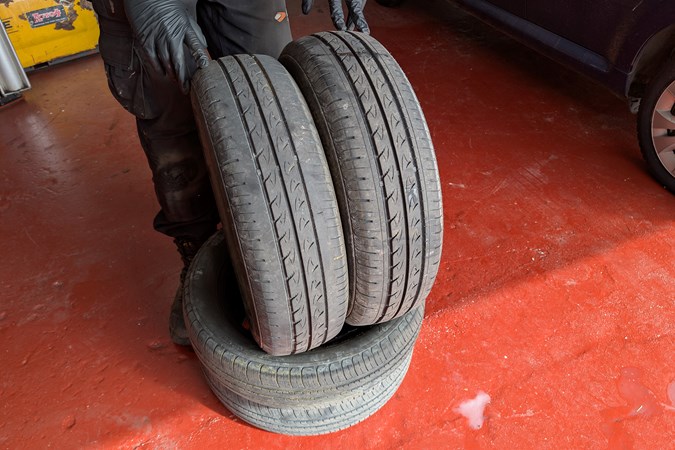
Fitting and first impressions
Swapping out the C1’s old, mixed bag of budget tyres (above) was a revealing process. They were cracked, unevenly worn and hard as Bakelite, typical for a car of this age that’s been maintained to a price rather than a standard. Once the Davanti Alltouras were on and balanced, the transformation was immediate.
The tyres were supplied and fitted by Preston Tyres, who were friendly, professional and should be praised for being very thorough. During fitting, their technician spotted a minor manufacturing defect on one of the tyres.

It wasn’t serious, but enough to warrant a replacement. Impressively, they sourced a fresh tyre from Davanti’s HQ near Liverpool and had it on site within the hour. The whole job still took less than a morning, which was a reassuring sign of good customer service and strong manufacturer support.
Gone was the vague, fidgety steering feel that made wet-roundabout driving a bit of a lottery. In its place was a newfound sense of confidence, particularly on damp and greasy roads. The difference was most noticeable on fast B-roads and country lanes, where the car previously felt nervous. Now it tracks much more faithfully, with cleaner turn-in and a more settled feel through corners.
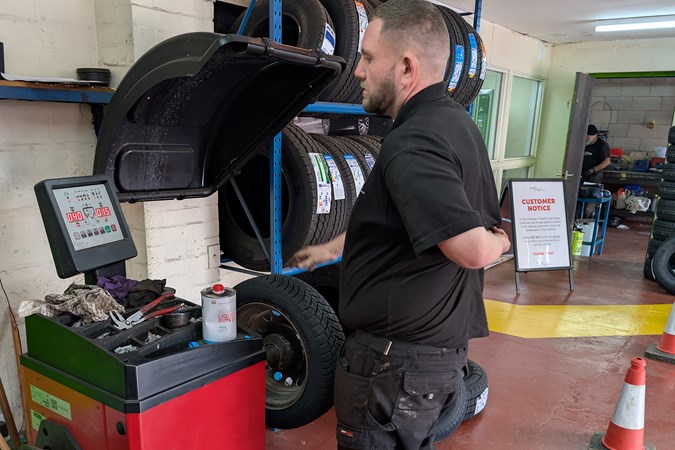
Spring Verdict: Wet weather grip and minimal wear
After 1,000 miles of varied spring driving, from dry B-roads to drenched roundabouts and soaking dual carriageways, the Davanti Alltouras have impressed across the board. Steering response is much improved, wet braking performance has been transformed, and there’s a newfound confidence at higher speeds. Road noise and ride quality are also better than before, making motorway miles a more relaxed experience.
Most impressively, the tyres are still showing almost 8mm of tread depth, virtually unchanged from when they were fitted. That kind of wear rate bodes well for longevity, especially on a lightweight city car like the C1, where front-end scrub is usually a concern, especially when driven enthusiastically.
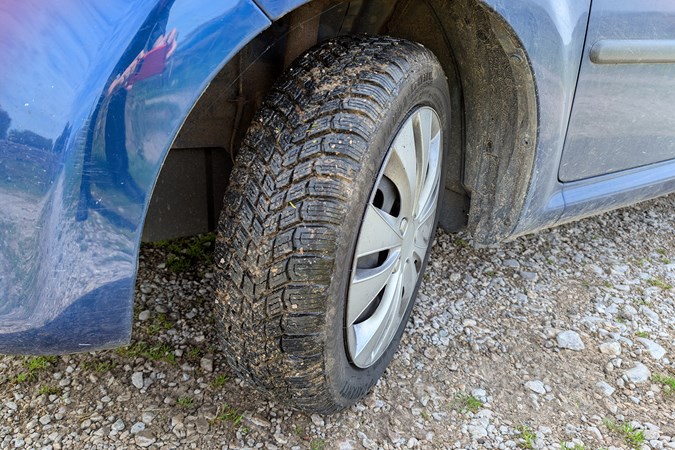
Summer update: hot weather, cool performance
After another 2,000 miles and a full season under their belts, the Davanti Alltoura tyres continue to impress – even as the temperature climbs and the demands on the rubber change. It’s in summer that many all-season tyres can start to feel like a compromise, especially on hot tarmac where softer compounds often dull steering feel and increase road roar. But we’ve experienced none of that.
On warm, dry roads the Alltouras feel composed and predictable. The steering remains nicely weighted and accurate, with no sensation of the tread blocks flexing or squirming during faster cornering. Braking performance is just as strong as in spring, and grip in the dry has never once given us cause for concern – even when dodging wayward tractors on narrow backroads.
At motorway speeds, there’s no perceptible increase in tyre noise or harshness. In fact, the Alltouras continue to deliver a more refined ride than the hard old budget tyres they replaced, without sacrificing feedback or control. Fuel economy hasn’t taken a hit either, suggesting rolling resistance is well within acceptable bounds for an all-season tyre.
The Citroen C1’s principal driver sums it up best: ‘No complaints so far.’ And that’s from someone who regularly puts the car through its paces on a mix of town traffic and twisty rural roads.

Still barely worn
Perhaps most striking is how little the tyres have worn. A recent check revealed tread depths still measuring just shy of 8mm across all four corners – barely any different to the depth recorded after fitting. The edges of the tread blocks remain crisp and sharp, and the siping is still fully defined.
No sidewall damage has appeared either, despite plenty of gravel drives, awkward kerbs and the occasional pothole-ridden rural detour. There’s no evidence of perishing, feathering or uneven wear – and on a 17-year-old city car with less-than-perfect suspension geometry, that’s no small feat.
So far, these tyres are backing up their claims of longevity and year-round reliability. With autumn around the corner, we’re looking forward to seeing how they cope as the weather turns colder and wetter once again.
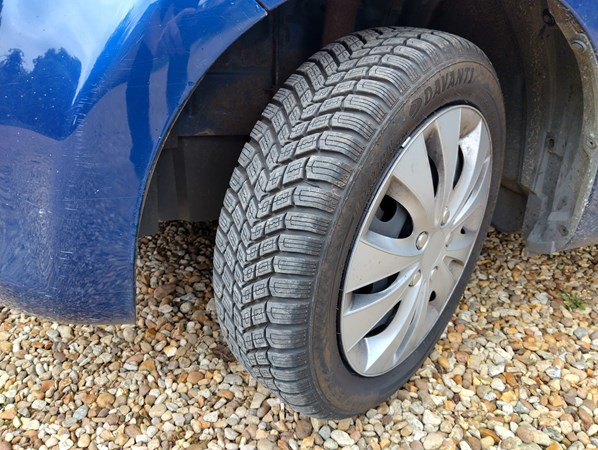
What’s next for the all-season tyre test?
With summer testing complete, we now look ahead to the cooler months. The all-season tyres will face fresh challenges on damp roads, cooler surfaces and the first hints of winter weather.
We’ll be watching closely for any signs of early wear or sidewall fatigue, as well as monitoring how well they deal with increasingly slippery roads. Comfort and economy will remain key factors, too.
By the end of the year, we’ll have a full picture of how these tyres perform across all conditions – helping you decide if a good all-season tyre like the Davanti Alltoura is worth the step up from budget rubber.
Stay tuned for the next update.
Just so you know, we may receive a commission or other compensation from the links on this website - read why you should trust us.


